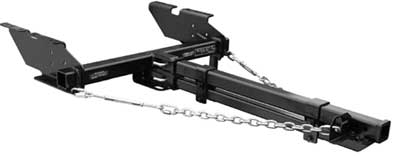We're real quick to mock what others do arent we? So you wouldn't build a hitch that way. Fine, don't do it. But don't mock the success of others when you have no first hand experience with it. The way we had it built worked great. It was done by a machine shop that works on building custom stuff for farmers, industrial equipment, you name it. When they build something, they overbuild it. No flex, no sway. Perfect solution to the problem we had.
Say what you want and namecall all you want - the only bozo in this thread is the guy who think he's the only one with a PROPER solution to the problem.
By the way, that same truck with the unsafe 'slip' hitch that I had welded up over 10 years ago is still pulling a 9000# vermeer 1800 chipper around today. The guy who I sold it to hasn't modified it one bit. It never needed re-welding, never had a problem with sway or flexing. I guess 10 years of road testing isn't enough for some critics.
OH YEH - I just remembered - we had a second truck (same year and model) welded up with the exact same hitch. It pulled around a 6000# bobcat plus attachments (rock hound, tiller, seeder, etc) on a 20' beavertail trailer. I used that setup for 4 years before selling the truck. I guess that was just a bozo setup too.

























































